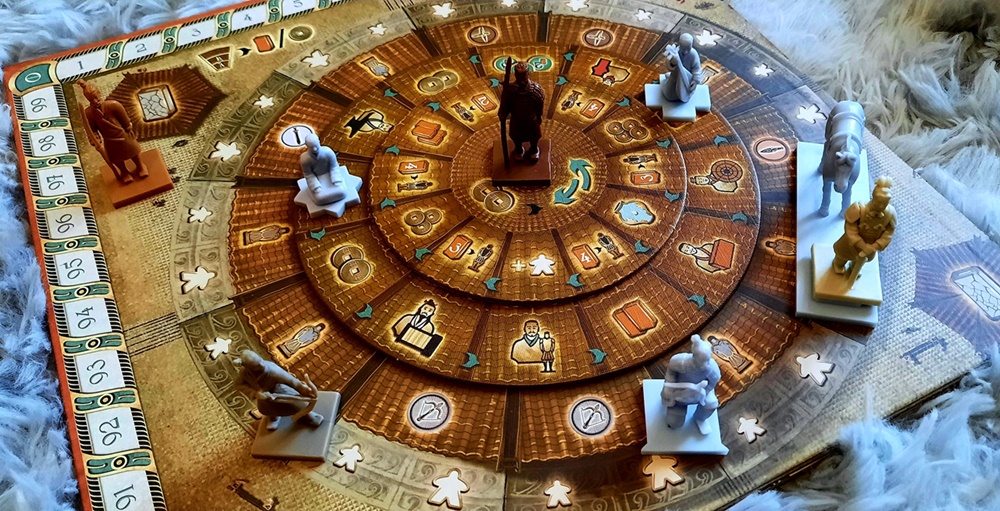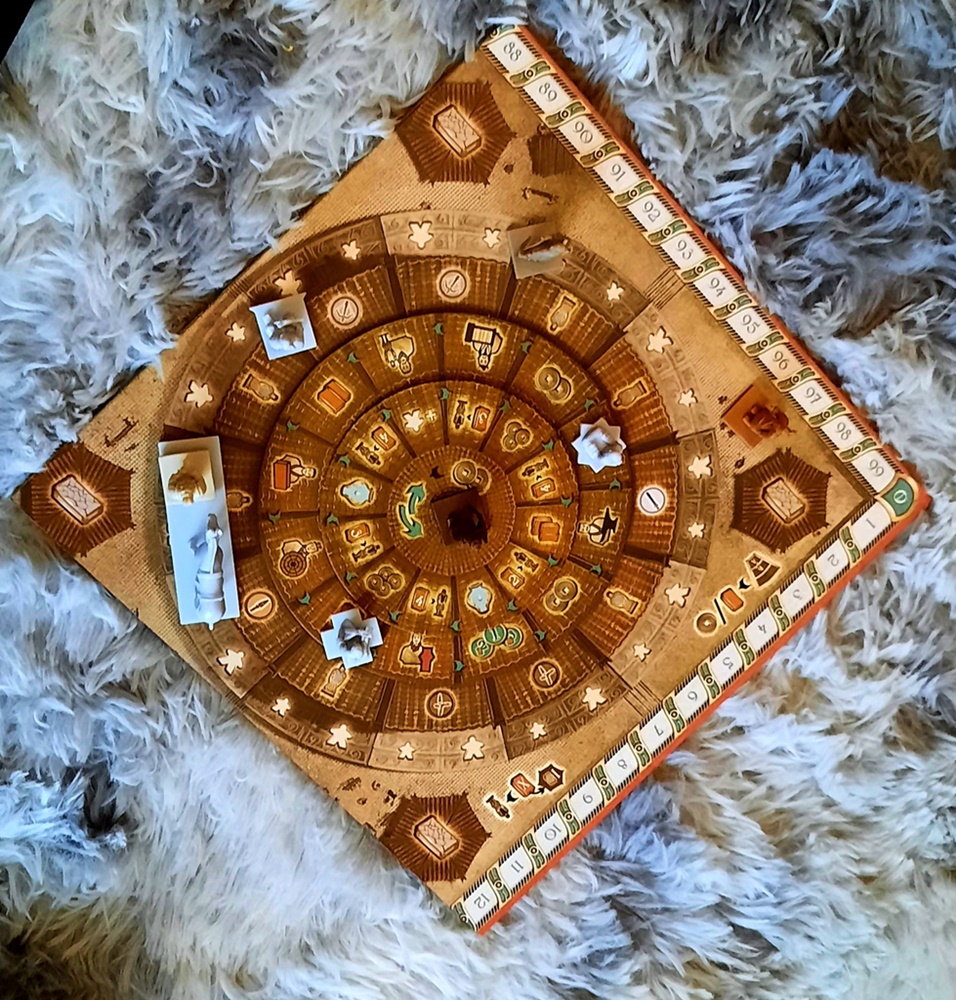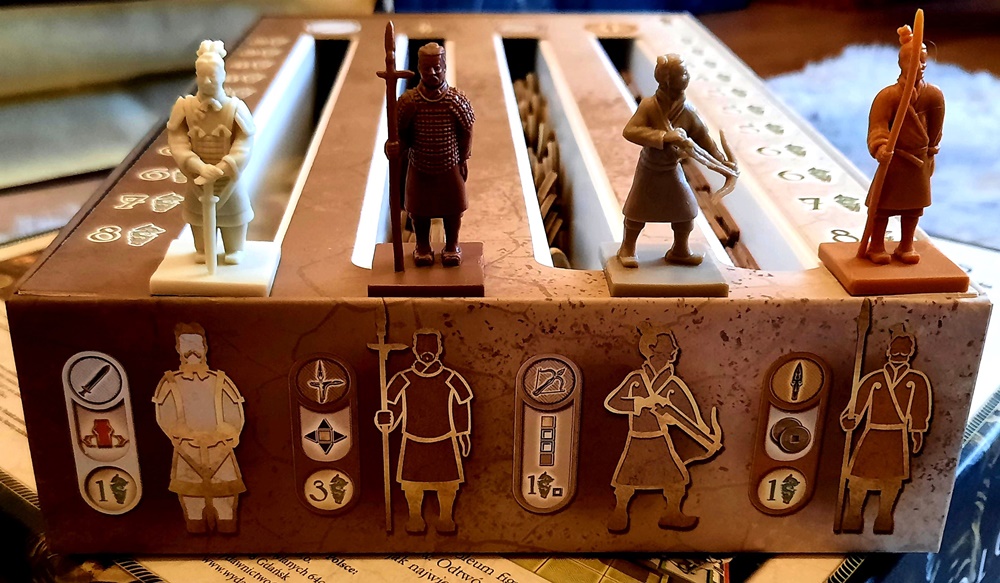All for one
In Terracotta Army by Przemysław Fornal and Adam Kwapiński, players take on the role of talented craftsmen and artists. They gather resources, train workers, and woo the favor of Imperial advisers. Each player should, in principle, strive to play a key role in the creation of the terracotta army. The players build the army together, but at the end of the game only one person can be the winner – the one who scores the most points for placing the pieces in the mausoleum.
Terracotta Army is a complex strategy and economic game that has been devoid of random elements (except for random scoring). Strategic thinking during the game is crucial, but don’t be afraid to combine and look at your opponents’ hands – as long as the pieces are in the game, anything is possible!

Elements and course of the game
The reviewed proposal from the Rebel publishing house is not only fantastically complex, but also extremely aesthetically prepared – it is a visual masterpiece (Zuzanna Kołakowska, Jan Lipiński, Aleksander Zawada, thanks!), although the elements are mostly characterized by subdued colors. The elements of the game include board, middle and inner circles of the workshop, inspector pawns, round marker, tokens, score markers and resources (clay tokens, coins), but also figures of officers, crossbowmen, guards, soldiers, specialists, servants, kneeling crossbowmen and horses. All elements have been prepared with the greatest care – they are rich in details and well cast. In this situation, a slightly higher price per game seems justified. It’s impossible to imagine cardboard figures on the board, seriously.
Preparation for the game has several stages – once we mount the wheels of the workshop on the board and push the cardboard tokens out of the moldings, we need to put the rest of the game in order. The next stages of preparation are related to laying the board, enriching warehouses with dry clay tokens, placing inspector pawns on specific fields and supplementing the organizer with hero figures. In total, the preparation for the game consists of 17 points that should be implemented with the greatest care – the better we plan the game, the more enjoyable it will be.

The game lasts 5 rounds; during each phase, players take turns placing workers on the board and taking actions (there are three phases: action phase, scoring phase, and cleanup phase). The round ends when the players have used all of their workers, then there is a summary and preparation for the next round. At the end of the 5th round, final scoring is done and the player who wins the game is determined. The manual is extremely detailed, but the developers have also thought about those players who do not have enough patience and want to go straight to the game. A summary of the rules is included at the end of the manual. It is also an ideal option for those people who just want to remember (refresh) the rules of the game.
In my opinion
The Terracotta Army is a game for two to four players. The atmosphere that the authors probably wanted was achieved – by playing, we fulfill an extremely important task, which aims to commemorate the emperor. I recommend counting points on a regular basis, because it is easy to get lost in many mathematical puzzles.
Undoubtedly, it will be more satisfying to play in a larger group. The terracotta army is primarily focused on scoring points. The mechanics have been properly thought out and work well. I especially like the multitude of combinations of moves during the game. The ideas are so original that when we play for the first time, we get deeply involved in the intricacies of the plot, later – a bit less. To sum up, the title is perfect for all those who like mathematical puzzles and are not afraid of challenges on the board. However, this is not a family game or a complicated euros. Oh, a charming, fascinating board game.

Thanks
Rebel Publishing House has made every effort to meet the expectations of the Terracotta Army player . In an otherwise very clear manual, we will find advice on what to do if our copy of the game turns out to be incomplete. In addition, the creators commit to updating (or correcting) the rules and changes in the game. Updates – as promised – will appear in English in PDF format for download at www.boardanddice.com. One of the mechanical changes that had a significant impact on the course of the game was included on a separate sheet, attached in physical form to the manual; this change refers to the wording of the first sentence in the box on page 13, i.e. Player bases are unlimited. If the player runs out of bases (has already placed 15 warrior figures in the mausoleum), should use appropriate replacements (this is really important!).

